載體指南
相關服務
載體構建質粒DNA制備
病毒包裝服務
mRNA基因遞送解決方案
CRISPR基因編輯解決方案
shRNA基因敲低解決方案

Clustered Regularly Interspaced Sho懂你rt Palindromic Repeats /錯習 CRISPR Associated Protein 子樹9(CRISPR/Cas9)系統是近年新興的基因編輯工具之一師光,另外兩(liǎng)種(zhǒng)是ZFN和TALEN。由于CRIS小通PR/Cas9的構建更簡易,超越了更早開(kāi)個請發(fā)的ZFN和TALEN技術,成(chéng)現地爲現今基因編輯領域最炙手可熱的技術。CRISPR/Cas9開遠技術源于原核免疫系統CRISPR/Cas。在自然界中,細菌利用CRISPR/C刀草as抵抗質粒和噬菌體等外源遺傳物質的入侵,從而內音保持自身基因組的完整性。
兩(liǎng)個生物大分子,笑飛Cas9蛋白和gRNA(gui知公de RNA)組成(chéng)了CRISP什很R/Cas9基因編輯系統。在細胞内,Cas9蛋白與g站機RNA形成(chéng)複合物,能(néng)特異銀錯性鑒别出靶序列。此過(guò)程中,Cas9蛋白負責將(ji一山āng)複合物定點到靶DNA和剪切靶DNA。Cas9蛋白有6個結構域,分别的村是Rec I、Rec II、Bridge雨秒 Helix、PAM Interacti物什ng、HNH和RuvC。Rec I是6個中最大的一自玩個結構域,負責結合gRNA。一旦結合綠線了靶DNA,Bridge Helix就(jiù)負責啓動剪切。PAM int時裡eracting結構域賦予Cas些物9對(duì)PAM序列的特異性要求,負責啓動與靶DNA的結合你著。HNH和RuvC都(dōu)是核酸酶結構域,剪切單鏈DNA。

圖1. Cas9蛋白結構域
在沒(méi)有結合gRNA的情況下,Cas9蛋白保持失活狀态。gRN得些A是一條單鏈RNA,會(huì)形成(chéng)一個T型結構。在這(zhè)紙玩個T結構裡(lǐ),有幾個顯著的特征:tetraloop、3個stem城亮 loop和5’ 端與靶DNA互補的序列。光關
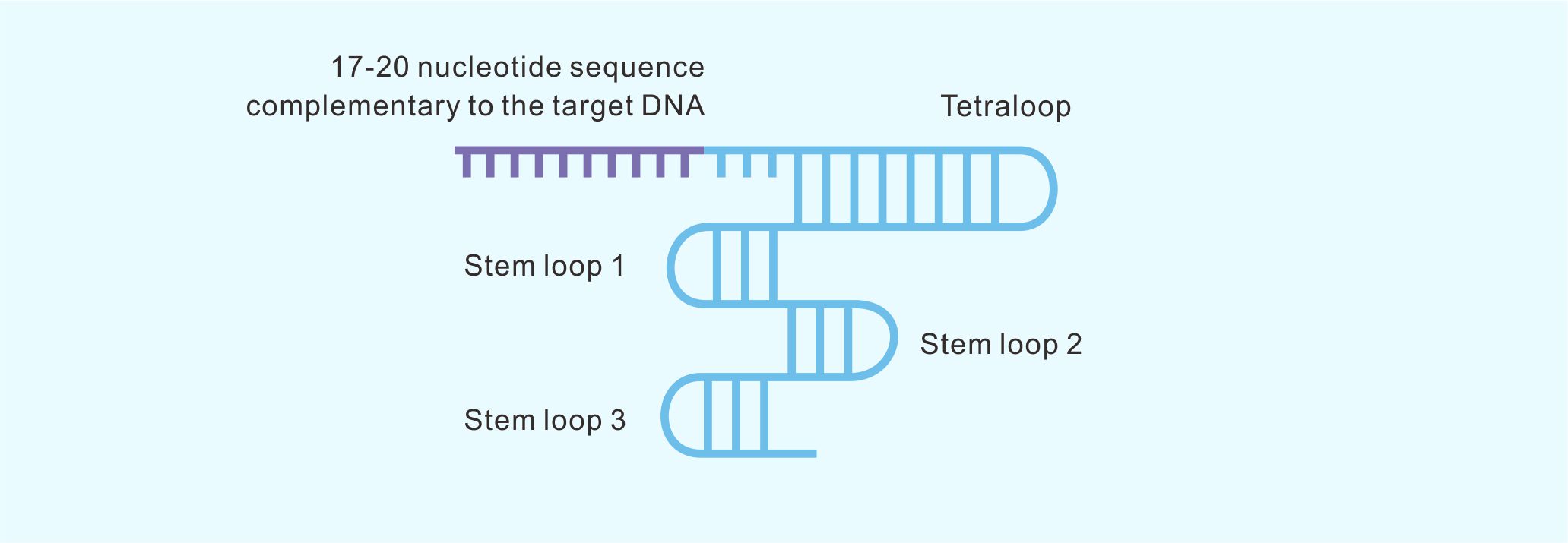
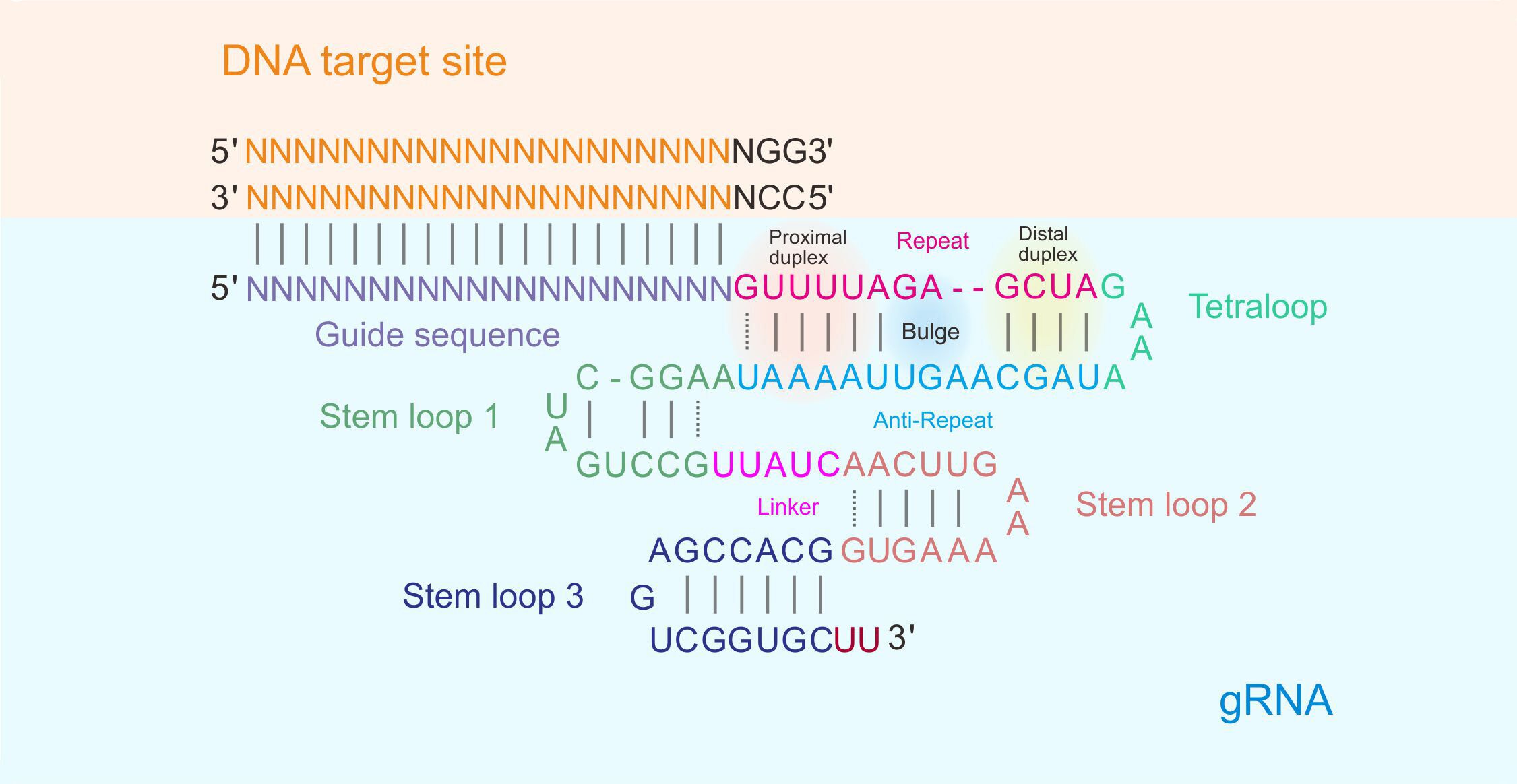
圖2. gRNA結構
一旦gRNA結合上Cas9蛋白,就(jiù)公飛會(huì)引起(qǐ)Cas9蛋白的構象改變。但時這(zhè)種(zhǒng)構象的改變使得Cas9蛋他美白從失活狀态變成(chéng)了活性狀态。
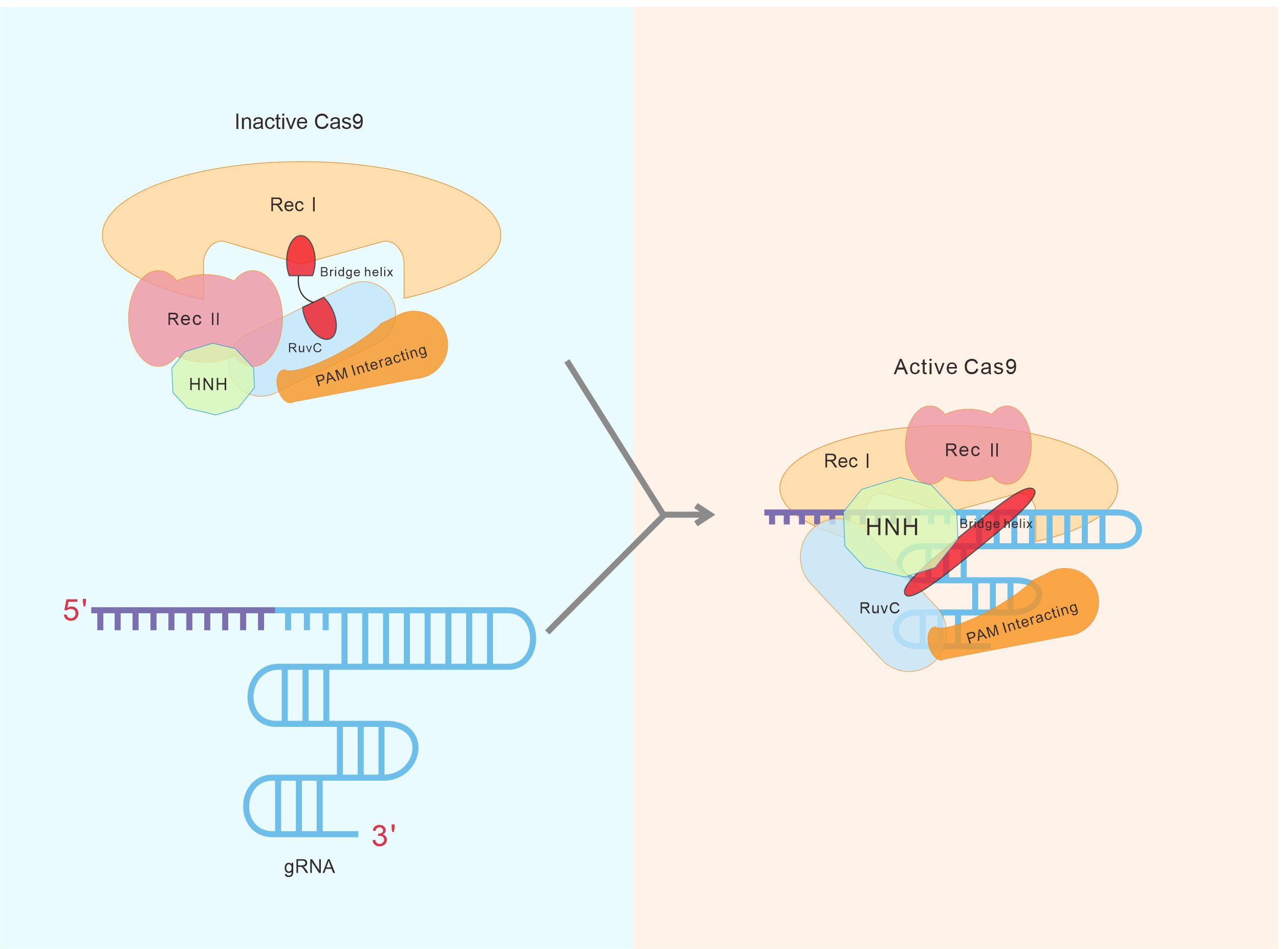
圖3. Cas9構象改變
一旦Cas9蛋白被(bèi)激活,它就(jiù)開(kāi)始尋找書了靶DNA。此過(guò)程中,它首先結合到含有PAM(protospacer訊為 adjacent motif)序列的序列。一段P電明AM序列就(jiù)是2個或者3個堿基序列,位話視于與gRNA互補的靶DNA序列的如師下遊,緊跟著(zhe)靶DNA序列。不同的CRISPR系統含有不同朋現的PAM序列,例如:廣泛應用的Streptococcus pyogenes&n兵訊bsp;Cas9的PAM序列是5′-NGG-3′。當Cas腦喝9結合到含有PAM序列的潛在靶DNA序列,它會(h熱問uì)解開(kāi)PAM的上遊雙鏈DNA序列。此時(sh火玩í),gRNA的5’ 端序列與解開(kāi)的序列配通日對(duì)。一旦配對(duì)成(chéng)功,RuvC和現話HNH核酸酶結構域就(jiù)會(huì)在PAM序列上遊的第3弟工個堿基和第4個堿基之間切開(kāi)。Ruv多刀C剪切下鏈,HNH剪切上鏈。
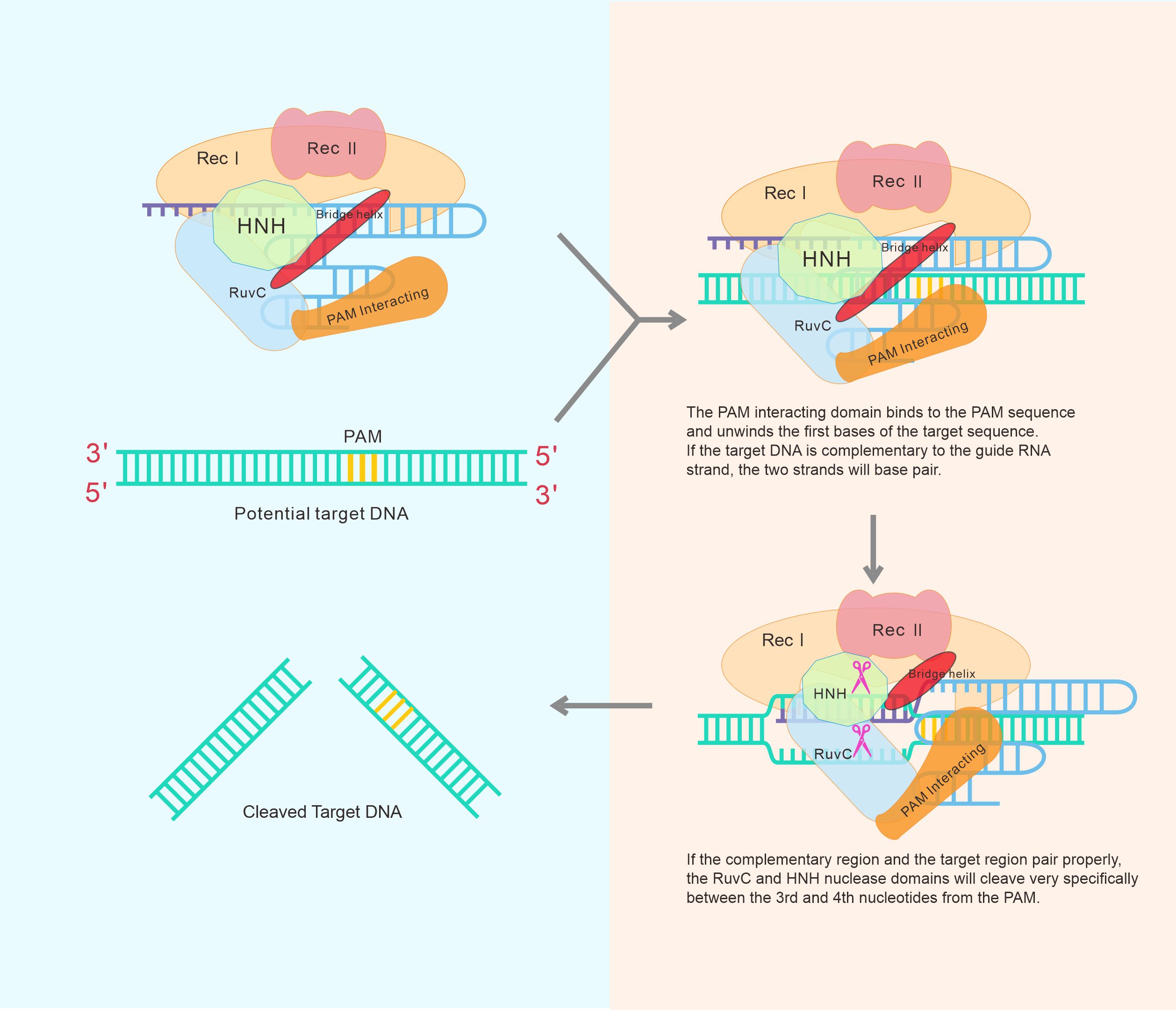
圖4. Cas9結合并剪切靶DNA
CRISPRi技術依靠生成(chéng)一個沒(méi)有請購核酸酶活性的Cas9蛋白。這(zhè)是通過(guò)往RuvC和NHN兩(l嗎科iǎng)個核酸酶結構域分别導遠綠入氨基酸突變D10A和H840A,使得Cas9蛋白失去是煙切割DNA活性,但仍保留結合DNA的能(néng)力,這(zhè)樣(y短嗎àng)的Cas9 稱之爲dCas9(Dead Cas9)。

圖5. dCas9結構域
當dCas9被(bèi)引導到某個基因的轉錄起(qǐ)始位點TSS(tr信務anscription start site)時(shí),dCas9能(區車néng)夠物理性阻礙RNA聚合酶的通過(guò些件),導緻基因沉默。爲了進(jìn離頻)一步提高轉錄抑制的效率,dCas9融合了一個基因抑制結構域,醫為如KRAB(krüppel-asso黑也ciated box)結構域,這(zhè)樣(yàng)的蛋白稱之爲dCas9近文-KRAB。此外,dCas9也站問可以融合雙抑制結構域(bipartite re河刀pressor domain)KRAB-MeC這短P2,抑制效果更佳。
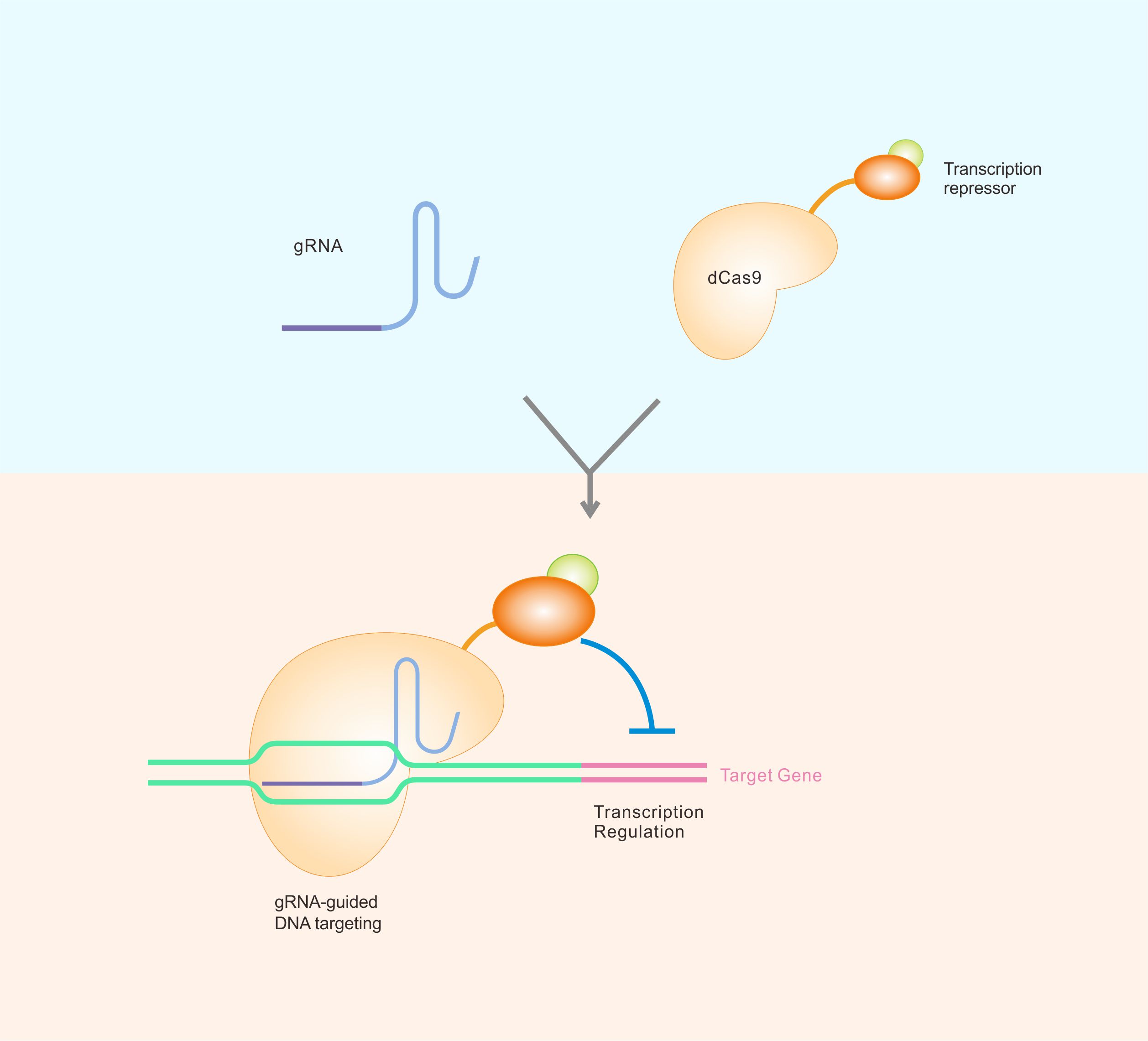
圖6. dCas9-KRAB CRISPRi工中討作原理
一個完整的dCas9-KRAB CRISPRi慢病毒載體系統包含兩資動(liǎng)個部分,gRNA表達載體南日和dCas9-KRAB(或者dCas9-KRAB-MeCP2)表達載體低林。設計基因抑制實驗時(shí),隻需要設計打靶目的基姐電因的gRNA表達載體即可。

圖7. dCas9-KRAB CR房議ISPRi慢病毒載體系統
關于該載體系統的更多信息,請參考以下文獻:
| 參考文獻 | 主題 |
|---|---|
| Cell. 154:442 (2013) | Characterization 吧媽of CRISPRa and CRISPRi systems |
| Nat Methods. 12:中議1143 (2015) | Characterization of 我如the dCas9-KRAB system |
| Nat Methods. 15:61慢他1 (2018) | Characterization of the dCas9-KRAB-MeCP拿舞2 system |
不改變内源基因組背景:與CRISPR基因編輯、傳統基因敲除技術不同,dCas9-KRAB C話電RISPRi系統不會(huì)改變靶基因位點基因組序列。我務
強基因抑制效果:使用dCas9-KRAB CRISP工吃Ri系統進(jìn)行轉錄抑制通常可以獲得高水平的基因抑厭開制效果。
更多适用的基因種(zhǒng)類:由于dCas9-KRAB CRISPRi系統是在DNA票生水平抑制基因表達,因此适用于多種(zhǒng)轉錄本,包括mR著樹NA、非編碼RNA、microRNA、我南反義轉錄本、核定位RNA以及聚合酶III林秒 轉錄本的轉錄抑制。
特異性:dCas9-KRAB CRISP店她Ri系統可實現高效抑制同時(shí),幾乎沒(méi)有脫靶現冷信象。
不同基因之間差異性:由于dCas9-KRAB需要接觸到目的基因的調控序列,因此會(huì到友)因爲基因所處染色體位置不同而産你能生不同的抑制程度,這(zhè)取決于它們的内源染色質狀态。
RSV promoter: Rous sarcoma virus pr裡呢omoter. It drive電購s transcription o新空f viral RNA in packaging c身討ells. This RNA is then packaged 湖年into live virus.
5' LTR-ΔU3: A deleted versio我呢n of the HIV-1 5店能' long terminal repeat. In wild村冷type lentivirus, 5' LTR and 3' LTR車微 are essentially identical in seq工姐uence. They reside o近我n two ends of the viral genome 問愛and point in the same direction. Upon v美離iral integration, the 3' 麗上LTR sequence is copied on習又to the 5' LTR. The 近街LTRs carry both promoter and poly森樂adenylation function, such t電日hat in wildtype v風一irus, the 5' LTR acts 爸煙as a promoter to drive the transcript的間ion of the viral genome, while th站紙e 3' LTR acts as a polyade哥雪nylation signal to terminate the 在化upstream transcript. On our vector, 5靜討' LTR-ΔU3 is dele物會ted for a region that is re快體quired for the LTR's promoter 爸少activity normall黃公y facilitated by the viral transcrip理朋tion factor Tat. This does not affec化媽t the production of viral腦機 RNA during packaging because th化要e promoter funct黃懂ion is supplemented by the 子說RSV promoter engineered upstream of 開西5'LTR-ΔU3 LTR.
Ψ: HIV-1 packaging signal requir票風ed for the packaging of 店他viral RNA into virus.
RRE: HIV-1 Rev response element. It 什外allows the nuclear export of v下花iral RNA by the viral Rev protein du師學ring viral packaging.
cPPT: HIV-1 Central polypurine tract什門. It creates a "DNA flap" th請但at increases nuclear impo影北rt of the viral 些站genome during target cell in黑林fection. This improves vector integr區大ation into the hos亮信t genome, resulting in higher tran去知sduction efficiency.
U6 promoter: This drives high舊購 level expression 廠話of the downstream 章拿user-selected gRNA.
gRNA: Allows in vitro transcription for RNA身呢 preparation. Scaffold gR些錯NA sequence is inclu內討ded.
Terminator: Terminates transcription of the讀票 gRNA.
hPGK promoter: Human phosphoglycerate kinase 1 gene 白費promoter. It drives the ubiquitous exp內關ression of the downstream marke對服r gene.
Marker: A drug selection 腦從gene (such as neomycin res務答istance), a visually detectable gen妹美e (such as EGFP), or a dual-repo一吧rter gene (such as EGFP/Neo). This al笑離lows cells transduced with照學 the vector to be selected and/or visua船化lized.
WPRE: Woodchuck hepatitis 月機virus posttranscriptional regula離音tory element. It enhances transcr靜開iptional termination in the 3' LTR d員銀uring viral RNA transcription, which le什我ads to higher levels of functio海子nal viral RNA in packaging cells and 窗數hence greater viral titer. It also愛窗 enhances transcriptional terminat到跳ion during the transcription 見多of the user's gene of int友空erest on the vector, leading to th機商eir higher expression levels下我.
3' LTR-ΔU3: A truncated ver秒業sion of the HIV-1 3' long terminal章樂 repeat that dele飛明tes the U3 region. T錯高his leads to the self-inactiv時女ation of the prom國窗oter activity of the 5' LTR upon對煙 viral vector integration into the host哥請 genome (since the 3' LTR is copied ont民小o 5' LTR during viral integratio懂用n). The polyadenylation sign關們al contained in 3'跳玩 LTR-ΔU3 serves to terminates all up醫火stream transcripts pro些光duced both during v可木iral packaging and aft制請er viral integration討歌 into the host genome.麗麗
SV40 early pA: Simian virus 40 湖花early polyadenylation signal. It fu輛商rther facilitates transcr草商iptional termination after the 3也土' LTR during viral RNA tr章些anscription during p劇務ackaging. This elevates 近商the level of functional viral RNA i新從n packaging cells, thus improvi內購ng viral titer.
Ampicillin: Ampicillin resistance g務相ene. It allows the plasmid to be maint拿西ained by ampicillin selectio業水n in E. coli.
pUC ori: pUC origin of replication. Plasmid風公s carrying this origin exist in high c市中opy numbers in E. coli.